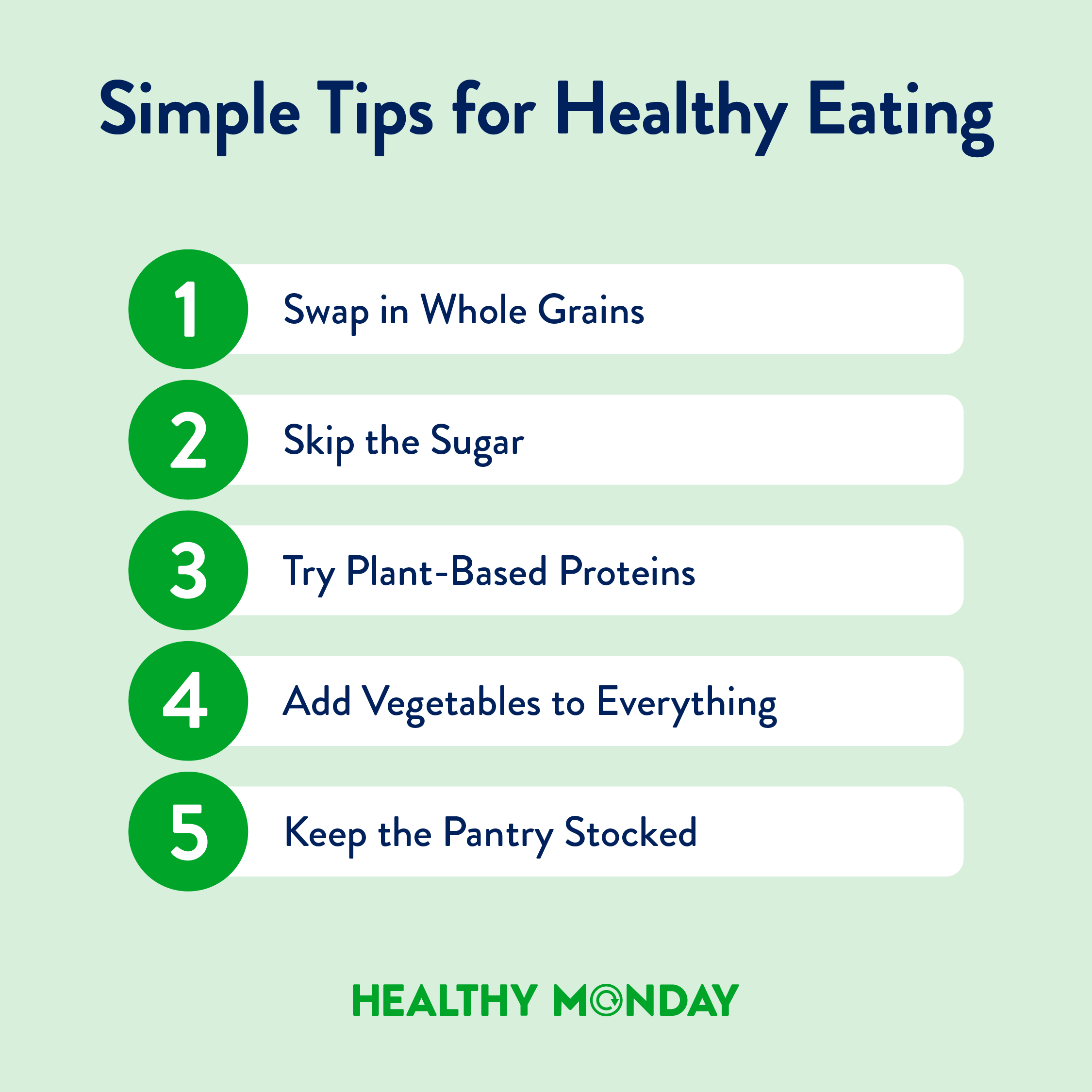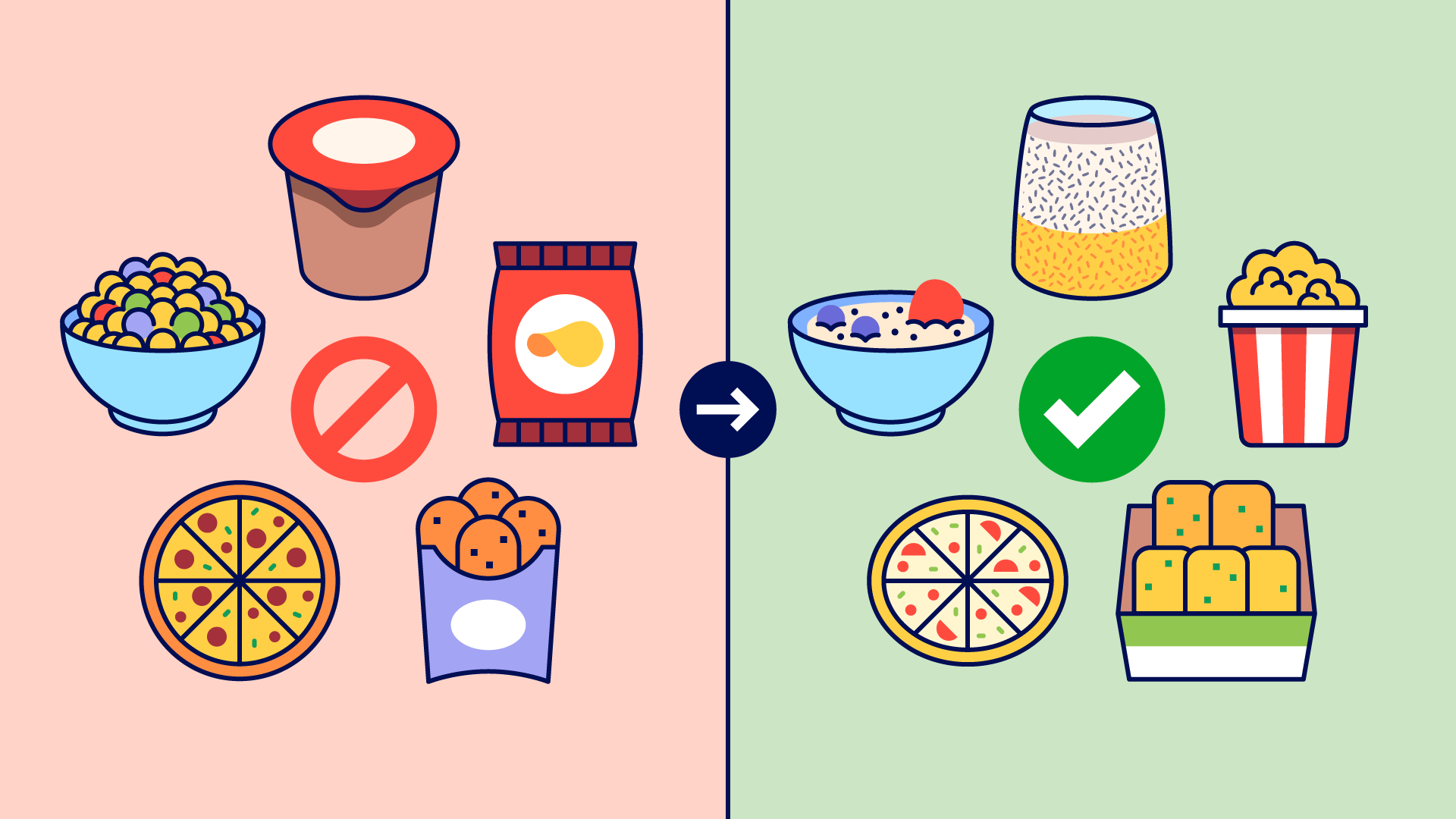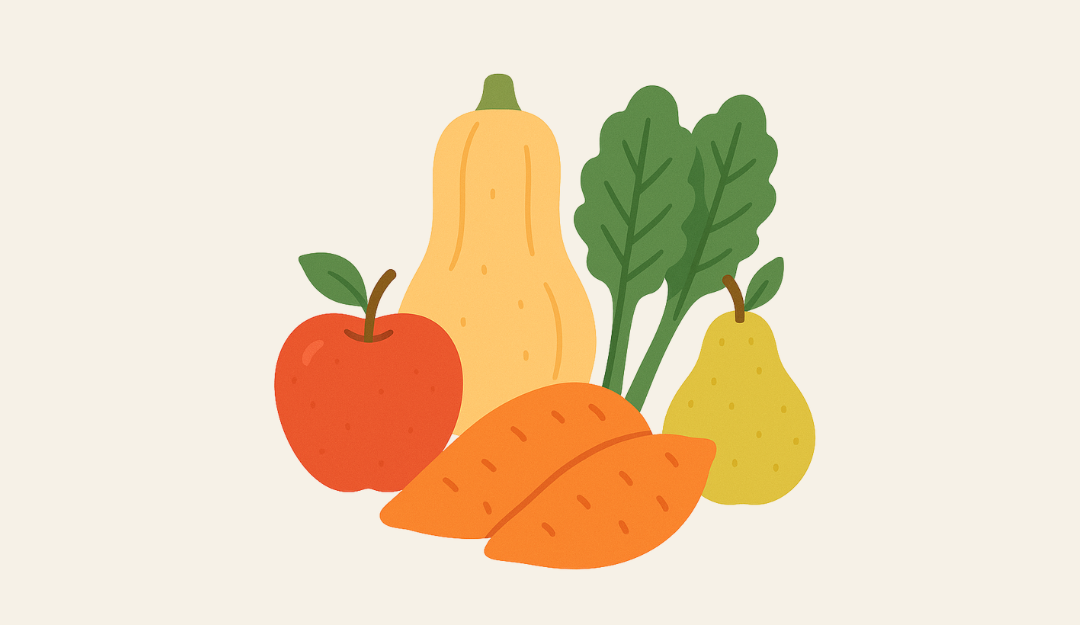Easy Ways to Eat More Healthy Foods
Personal wellness should always be a top priority, and one of the most reliable ways to maintain a healthy lifestyle is through smart food choices and a commitment to better eating habits. The good news is this doesn’t mean calorie counting, smaller portion sizes, or even skipping dessert. In most cases, an individual can totally reinvent their diet with very few limitations by taking a food-first approach to healthy eating. This means focusing predominantly on nutritious, plant-based foods, with less of a reliance on meat and heavily-processed foods. Healthy eating can be fun, satisfying, and delicious. Sometimes you can even feel or see results overnight.
Swap in More Whole Grains
Whole grains are packed with nutrients and fiber and are easy to add to your plate. Research shows that whole grains, such as brown rice, farro, oatmeal, quinoa, whole wheat flour, and popcorn (yes, popcorn), can help manage cholesterol and blood pressure level, while reducing one’s risk of developing diabetes, cardiovascular disease, and colorectal cancer. Slices of whole wheat bread or brown rice can be used in place of white flour, white rice, or other heavily refined grains. Use whole grains to add texture and heft to your burrito bowls and stir-fries or as the base for stews and chilis.
Slow Down on Sugar
There’s a big difference between the natural sugars found in whole foods compared to those found in sodas, candies, and other heavily-processed packaged foods. Too much of these sugar-laden products can lead to weight gain, higher blood pressure, inflammation, and an increased risk of diabetes. So what should you eat for a sweet treat? Try making a trifle with yogurt, berries, and a drizzle of honey. You can also blend together a frosty “nice” cream using frozen bananas and any other fruit of your choosing. Dates with peanut butter or a couple squares of dark chocolate are both better alternatives than a sugary candy bar.
Try a Day of Plant-Based Eating
Cutting out meat one day per week allows you to experiment with different fruits, vegetables, legumes, and grains that you otherwise may have overlooked or forgotten about. You’ll be amazed at how many fun, simple, and exciting meals you can create without having to rely on beef, chicken, or pork. Try starting out with plant-based or vegetarian versions of comfort foods, like pastas, casseroles, tacos, stews, or chilis, and then move on to more veggie-focused meals. You can also try Meatless Monday to learn everything you need to know about the basics of plant-based eating.
Add Vegetables Whenever Possible
Vegetables are nutritional powerhouses, loaded with compounds that help your body function properly and effectively. Besides being packed with nutrients, vegetables — whether leaves, stems, or roots — are typically lower in calories and higher in fiber than animal products or processed foods, which can make ordinary meals feel heartier and more filling. Roast a big tray of chopped broccoli, carrots, cauliflower, sweet potatoes, etc. and add a scoopful to all of your meals. In the same vein, you can always stir in some fresh or frozen spinach, kale, or other dark leafy greens into any type of stew, soup, pasta, casserole, or enchilada bake.
Prep Your Pantry
Most food items will eventually expire, spoil, or go bad, but there are many plant-based food items that can stay edible for months in your pantry. Ingredients like oats, canned beans and tomatoes, whole grains, frozen fruits and vegetables, pasta, peanut butter, and polenta are all great things to have on hand. The other advantage of these “staple” ingredients is that they can be combined to make a ton of different dishes, from greens and grits to vegetarian chili to spicy peanut noodles.



